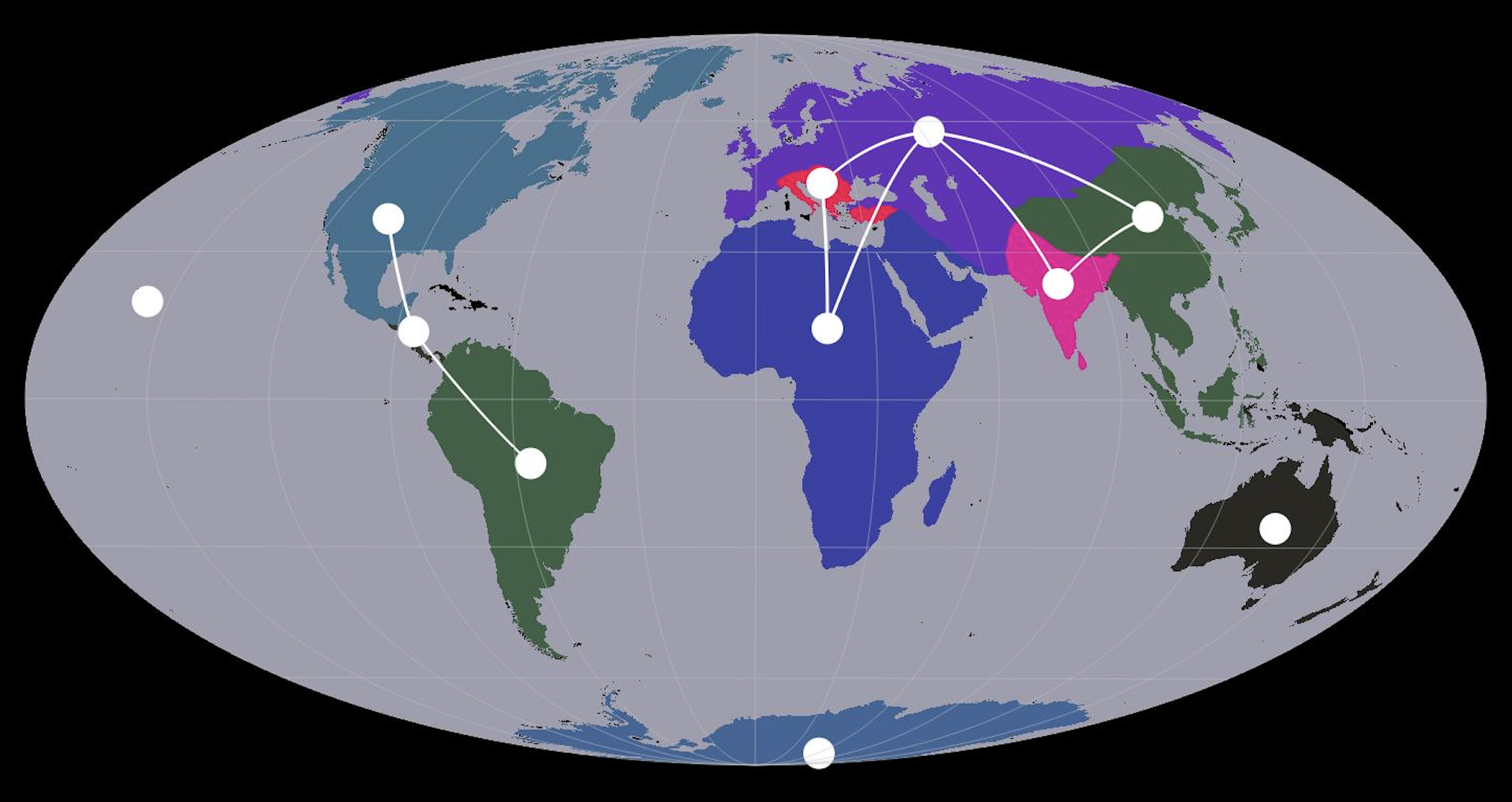PAw GeoSSE: a paleogreographically aware GeoSSE model
Written on December 3rd , 2024 by Ixchel S. González Ramírez
Phylogenetic biogeographers have understood range evolution as an historic process. As such, they have modeled the evolution of range as a character in an attribute of lineages that changes through time, using the character evolution machinery. Nevertheless, range evolution has been long recognized to have specific attributes that separate it from other chracters. For example, it is well known from a biological perspective that changes in the range or lineages are often associated with speciation events (e.g. allopatric speciation or jump dispersal). During my dissertation, I became interested in studying the evolution of the range in the family Aytoniaceae.
Studying ancient and widespread lineages exharcebates the likelihood of unobserved speciation events since more time has passed and thus the chances of lineages going extinct is higher. Not accounting for this possibility will potentially bias our estimates of the parameteres associated with range evolution. The GeoSSE machinery, while originally developped as a way to account for the effect that areas might have on diversification rates, provides a modelling framework where we can account for the probability of biogeographic evolution to be associated with missing speciation events as we model the diversification process in association with range evolution.
Furthermore, older lineages have experienced more continental configurations through time, thus, it is important to account for these changes when reconstructing widescale range evolution. By implementing a paleogeographically aware (Paw) geoSSE +J model, I studied the range evolution of Aytoniaceae liverworts and compared the effect of distance on liverwort anagenetic and cladogenetic dispersal events.